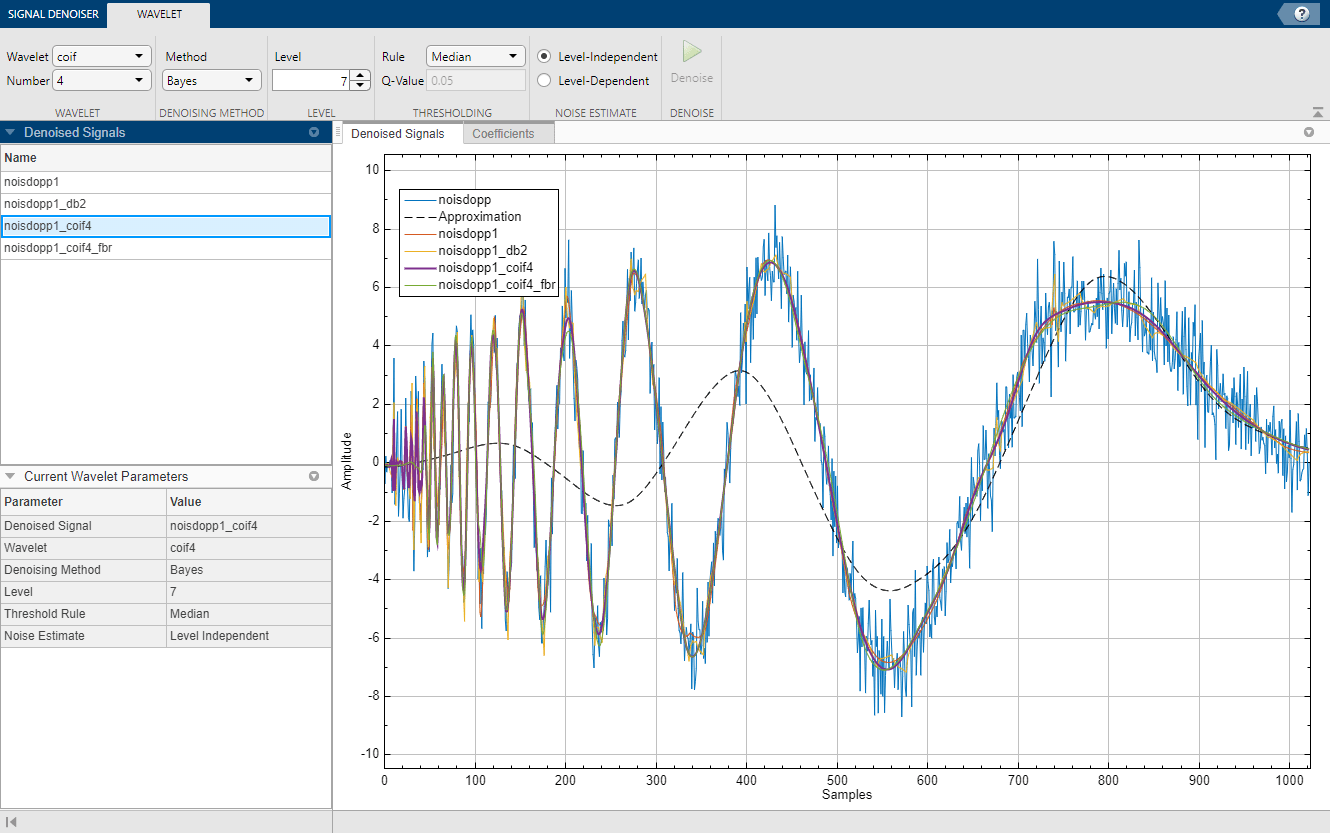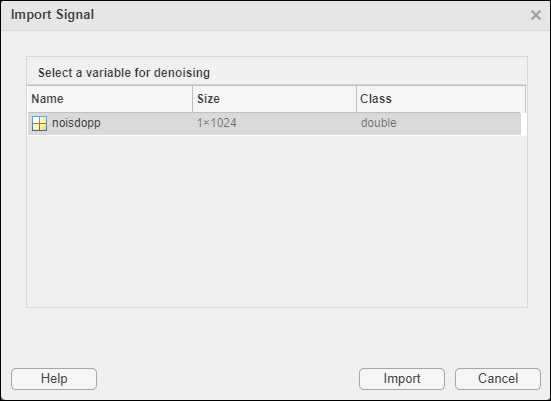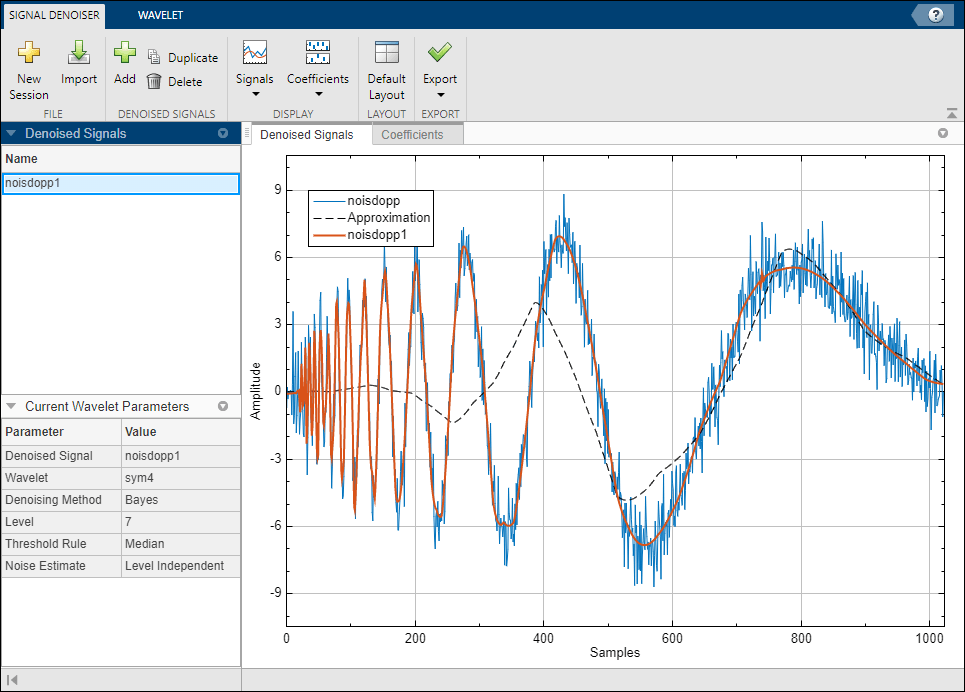Wavelet Signal Denoiser
Visualize and denoise time series data
Description
The Wavelet Signal Denoiser app is an interactive tool for visualizing and denoising real-valued 1-D signals and comparing results. With the app, you can:
Access all the signals in the MATLAB® workspace.
Easily adjust default parameters and apply different denoising techniques.
Visualize and compare results.
Export denoised signals to your workspace.
Recreate the denoised signal in your workspace by generating a MATLAB script.
The Wavelet Signal Denoiser app provides a way to work with multiple versions of denoised data simultaneously.
A typical workflow for denoising a signal and comparing results using the app is:
Start the app and import a 1-D signal from the MATLAB workspace. The app provides an initial denoised version of your data using default parameters.
Adjust the denoising parameters and produce multiple versions of the denoised signal.
Compare results and export the desired denoised signal to your workspace.
To apply the same denoising parameters to other signals in your workspace, generate a MATLAB script and modify it as you see fit.
For more information, see Denoise a Signal with the Wavelet Signal Denoiser.
Open the Wavelet Signal Denoiser App
MATLAB Toolstrip: On the Apps tab, under Signal Processing and Communications, click the app icon.
MATLAB command prompt: Enter
waveletSignalDenoiser.
Examples
Parameters
Programmatic Use
Tips
To denoise one channel of a multichannel signal, import the channel programmatically. For example, denoise the 10th channel of the multichannel Espiga3 EEG data set using these commands.
load Espiga3 waveletSignalDenoiser(Espiga3(:,10))To denoise different 1-D signals simultaneously, run multiple instances of Wavelet Signal Denoiser.
Version History
Introduced in R2017b


